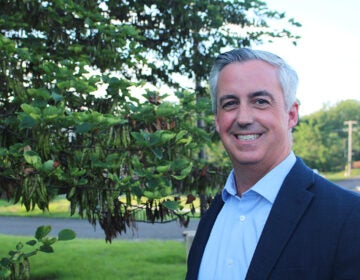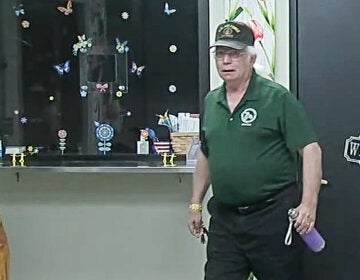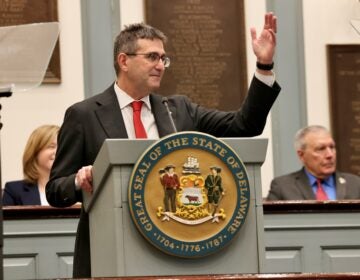What makes schools safe? Add your voice to the dialogue
-
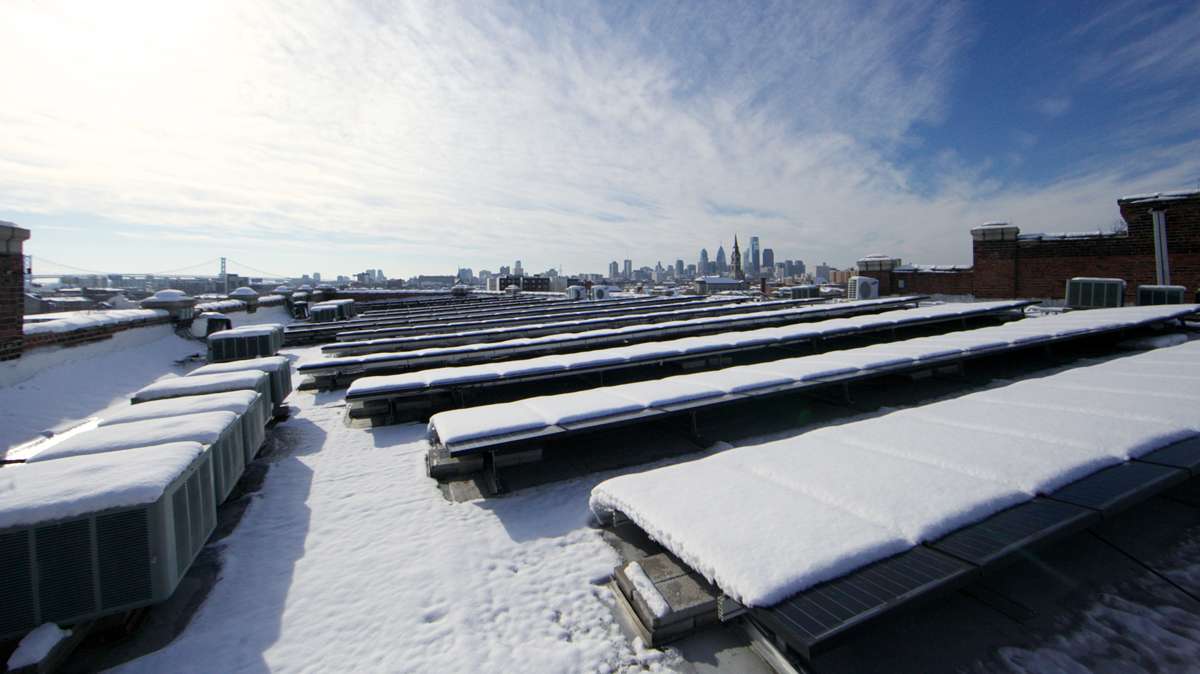
-

-

-
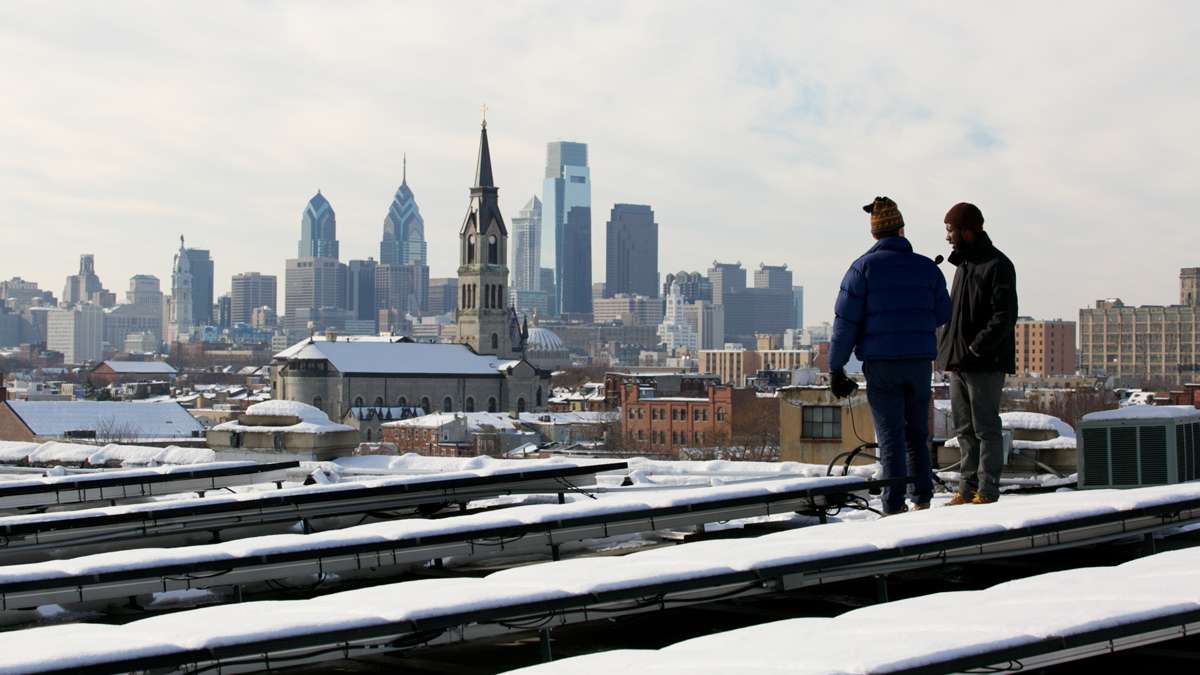
A view from the rooftop of the Crane Arts building in Philadelphia's South Kensington section. (Nathaniel Hamilton/WHYY)
-
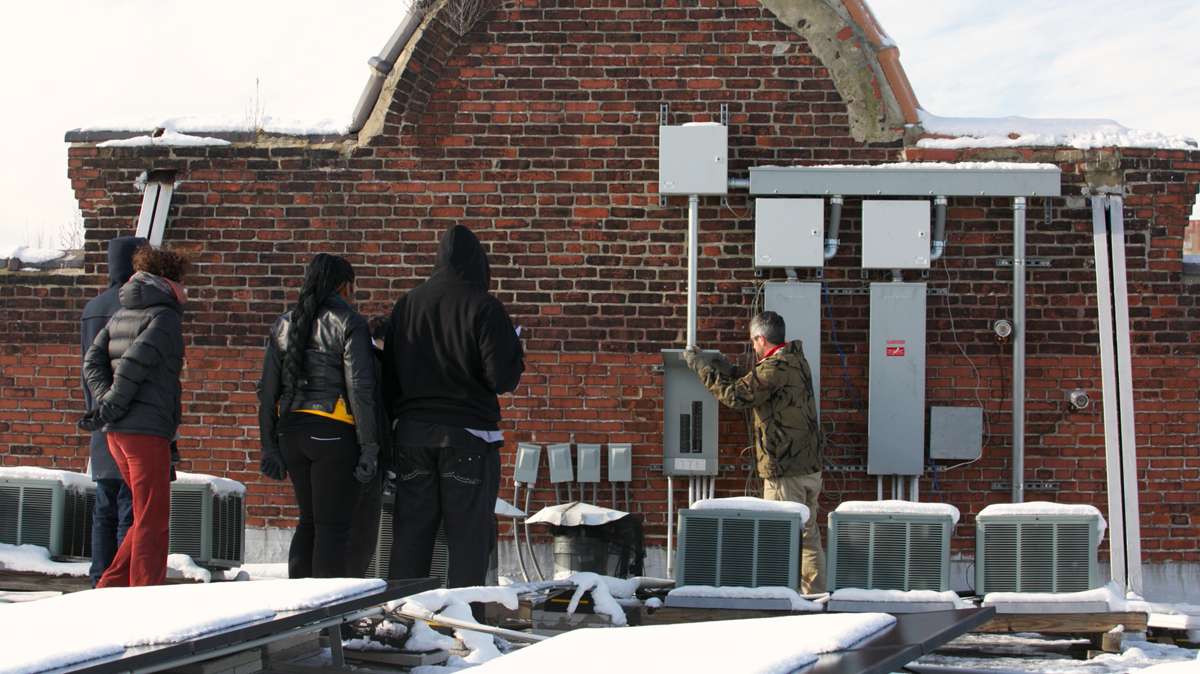
-

In the year since the Sandy Hook Elementary School shootings, many of us have been asking “How do we make schools safe?” The Penn Project for Civic Engagement and WHYY last weekend tried to get at some answers.
A year ago this week, the nation’s heart stopped, then broke, as the news trickled in from Sandy Hook Elementary School in Newtown, Conn.
In the year since, despite predictions made after the scope of the horror became clear, little has happened to change gun laws. Talk of improving the tattered mental health system faded as the usual concerns about taxes and deficits reclaimed center stage. Entrepreneurs have been busy developing and marketing products aimed at improving the security of schools.
But discussion of a vital question — over which millions of words were spilled on Facebook and other social media right after Sandy Hook — has seemed stuck in neutral:
What makes schools safe?
How do we wisely assess the biggest risks facing schoolchildren, and how do we equip, train and mobilize the adults around them to do all that is rational to keep them safe? Where do we find the resources to do this?
These questions inspired an event that WHYY/NewsWorks organized last Saturday at the University of Delaware’s Wilmington campus. About 50 people — educators, students, police officers, parents — gathered to hear from and quiz three experts, and to add their own thoughts.
Speak up
Watch the 5-minute video above for a quick overview of the event. Reports from table talk discussions with participants appear below. Then we invite you to join the dialogue, with your observations, concerns, suggestions and questions. Click the Comment button to the left.
The discussion was led by moderators from the Penn Project for Civic Engagement.
The panelists were:
Raymond Lorion, dean of the education school at Towson University.
Frank Borelli, a retired police detective who runs Officer.com.
Dr. Anthony Semone, a forensic psychologist who has counseled both police and the families of at-risk children.
The problem of bullying
Lorion noted that mass school shootings have tended to be committed by white suburban males in affluent communities, while the picture of violence against urban students tends to be different. It arrives more as a steady, daily experience, rather than a matter of spectacular incident.
The thread, he said, that connects these various forms of violence against students is bullying. Bullying is the most common form of violence on school grounds. But Lorion noted that incidents of bullying that were poorly addressed by adults often prove later on to have planted the seeds for mass shootings.
“In one national survey, seven out of eight children who reported being bullied also said that they had no expectation that the adults around them would stop the bullying,” Lorion said. Turning that ratio around, he said, is a vital step towards curbing bullying and related violence – because nothing stops a bully like witnesses insisting he stop.
Semone and Borelli agreed with Lorion’s emphasis on curbing bullying. Semone stressed the need for schools to intervene aggressively with both child and parents at the first sign of bullying or antisocial behavior. He acknowledged this can be hard to pull off, because parents of such children are often disengaged – “sitting way up in the Bob Uecker seats,” as he put it.
Should schools encourage self defense?
Borelli criticized “zero tolerance” discipline policies in schools, which he contended often punish a victim who defends herself as strongly as the aggressor in an incident. He thinks this builds a habit of passive acceptance of aggression among students which increases the toll during mass shootings such as Virginia Tech.
With Lorion dissenting. Semone and Borelli each advocated increasing the presence of armed adults in schools. Borelli, a retired police officer who said he’d shot and killed three people in the line of duty, said any armed adults in schools should be “volunteers,” who get extensive training in how to use and conceal weapons, and how to respond in urgent situations.
“No one should be forced to make the sacrifice of carrying a weapon,” Borelli said. “I say sacrifice because agreeing to carry a weapon in school by force is equal to saying that you will put yourself between a potential shooter and the children and staff. Also, having been in lethal fights before, I can tell you you never quite get over or forget them.”
Other changes to curb violence
Changes can be made in school design and equipment to protect children and teachers, Semone argued. He advocated designing classrooms so that anyone coming in first enters a kind of antechamber where the only part of the room visible is the teacher’s desk.
Lorion countered that these and other proposals for “hardening” security at schools tend to hamper the normal, daily running of schools, and pose risks of backfire. He said he’d rather see limited dollars for school safety spend on community outreach to identify the best ways to limit bullying and provide services to children who are struggling with humiliation and rage.
Reports from breakout conversations
After the opening panel, participants talked with one another around tables for an hour, comparing ideas and generating questions for a final, back-and-forth session with Lorion, Borelli and Semone.
Here are some reports on those table conversations from the PPCE moderators.
Group 1
The group was highly engaged, highly motivated and highly experienced with the issues at hand. Many at the table could have sat and presented their views as a panelist themselves. This group had a real passion and concern for the issues that was the prevailing spirit for the entire conversation.
A superintendent of a Pennsylvania school district
A Philadelphian who described himself as committed to children’s empowerment
A mother of two students and CEO of two Philadelphia charter high schools
A doctoral of education candidate and former chief administrator at a Wilmington charter high school
A grandmother of two Wilmington-area elementary students and an active participant at her church in mentoring young people
An older woman who comes from a family of teachers
Moderator: Ted Enoch
What comments by the panelists stood out for this group?
That kids under 6 cannot understand the reality of death, that they don’t understand the finality of it. “I witnessed a shooting at 6 years old, and let me tell you, there was no misunderstanding of the finality and severity of what I saw. I will never in my life forget what I saw and understood that day.”
That kids don’t know what pain is, that they don’t know right from wrong. “I believe in desensitization, and video games may play a role in that.”
“I don’t think we want to frame responses to violence based on [perceived] deficits within our children [like lack of empathy or not knowing right from wrong].”
“I couldn’t help but think that, much like how we are reacting right now, that nearly every solution to safety/violence in our schools will be challenged by someone. To me, the great question is, ‘How do we get a community to achieve something close to a consensus and agree on a course of action that everyone invests in?'”
There is no fool-proof system. We do have to look at family structures, or specifically, the lack of a male/father figure in many of the homes of the students who we are trying to serve How can we successfully address families and threatened family structures in our school settings?
“That statement, that kids, or victims of bullying, seven out of eight of them believe adults do not intervene to support them when needed … Well, I know that in my community and in my church, far more than seven out of eight adults are intervening, but how do we get the students to know and understand that?”
How can we call attention to the problem of bullying and victimization without glorifying perpetrators and reinforcing the negative sides of it all?
Panelists did provide good information about the impact of shame and humiliation.
The issue of cyber-bullying is huge. “All of our kids, even those menaced by a bully, used to be able to retreat and be safe at their home. Now, home, where all of us have computers and smart phones and tablets, the attacks can continue, the shame and humiliation can be worse. It is very important for us to be educating our children about proper ways to respond to bullying and cyber-bullying, so that they see there are strong responses and so that we build resiliency and not a mindset of isolation and victimization.”
We have to learn the language and codes of our children if we are going to monitor and respond. “I am friending local youth in my church in social media platforms. I have to know the things they are talking about. And I do respond. They will hear from me. And I have seen that this makes a difference.”
Lt. Borelli was a proponent of having more trained and armed teachers who will be ready and willing to serve and sacrifice in the moments of greatest need. “He mentioned how he shot and killed three people… Was lethal force required in each of those shootings? Is he being an example of a responsible wielder of a firearm? I’d like to know more about that before he is easily able to espouse those ideas in the public”
What are effective ways that you are seeing people build safety in our school communities?
“Leaders of schools are key. There has to be an unwavering stance on equality and justice. There cannot be gray areas. We have to train all of our teachers about bullying, even comments like ‘That is so gay.’ Students have to completely know that they are in a safe environment for everyone. We have to push and challenge our educators to get there.”
“We have to ask kids what they need. We need to achieve these systems of safety in dialogue with our youth. I was so happy to see those young people walk in today when they did. We always must be looking to have the voices of the young in these discussions and programs, every step of the way.”Response: “Yes, agreed. In our anti-bullying programs, we include children’s surveys. And we got very surprising data and responses. It is important to include them.”
“I am concerned about the way the conversation has evolved since Sandy Hook… That the dialogue now seems to be all about bullet-proof glass and armed guards.”
“Prevention is always better than having to find a cure.”
“Why has Sandy Hook been the activator? Children in our cities have been facing violence for years. They have gone to schools where violence is the norm for years. Did a national outcry occur because of the color of the skin of the Sandy Hook victims? Is it because the violence took place in an upper-class community? This breaks my heart.”Response: “Well, I hear you about those questions, but I think it was the sheer numbers of children… And the ages of those victims. They were so young. This broke through our numbness and really stood out.”
“In our community, we held a parent night about social media. That turnout was great. We worked hard to teach about positive reinforcement with our children. We started working with a “known” bully. We got her into drumming. Then we supported her and stayed involved with her. I am seeing a shift. Not perfect, but a real shift has begun.”
“I am a believer in people and not programs. Our job is to attract the best people and then support them. That will show results.”
Group 2
A woman in charge of the DuPont business that makes bulletproof glass coatings. She said her team is looking at building their business by selling bulletproof glass to schools.
A University of Delaware adjunct faculty and teacher for 28 years in various schools, inner city and others, throughout the country
An older woman with no children in school, who was moved by Sandy Hook
A younger African-American woman who runs a program for troubled teens and is being bullied herself as an adult in the workplace. She came because she feels people who advocate or complain about conditions become the problem.
Moderator: Ellen Peterson
What makes a school safe?
Need buy-in from all parties, including outsiders and insiders
Need to focus on targeting the kids-why are we unduly focusing on parents and teachers?
Are bullying programs lip service or a serious attempt? I day modules and programs are being rolled out. How has this training affected behavior?
Need more parental involvement, supervision, and chips for monitoring in kid’s computers akin to the internet protections for pornography
This session seemed to Kelly to represent a “white version of safety.” Where is focus and understanding for the inner city kids who get beaten up on the bus for being attractive?
Transparency in reporting and software. Are people in charge at schools punished for accurate reporting? Is it accurate?
Which statements did you agree or disagree with and why?
Why the lack of focus on funding for physical security? Needs bigger state discussion, local districts have minimal impact on those dollars
We understand “zero tolerance” policies but also believe kids need to fight back and be taught how not to be victims
Questions raised for panelists:
What are rewards and punishments for teachers and others who accurately report violence and statistics?
Need for distinct strategies for suburban and urban crime; can we put the money and focus on problems that are specific to different populations?
Should we have minimal physical standards in place for all schools?
How transparent is the reporting and handling of issues? How transparent should it be? What are conflicts of interest? How do “good old boy” networks play a role in keeping incidents quiet or mishandled?
What role can the media play in showing positive examples of news, handling bullies, etc.?
Group 3
The group of eight people, ranging in age from 30 to 72, included one teacher, one person who is starting a school in Delaware, and a volunteer in the Unionville-Chadds Ford School. All were parents; one was a grandparent.
Moderators: Ellen Greenberg and Loretta Raider
Main points discussed:
The need for and frequent absence of mutual respect. All participants touched on this at one point or another. There was discussion that the culture has changed. It was stated that, “as a society, no one wants to get involved.”
Getting all of the people involved — policymakers, students, teachers, designers, parents, etc.
Question was raised about how much teachers can be expected to do/how much responsibility can they be expected to take on?
The need to identify potential “problem” children early on and know what resources and support to direct the children/families.
The importance of preparation, planning, training and practice – making sure that everyone is as prepared as possible. Raising awareness for all involved.
The sentiment that there’s not a lot of anti-bullying that’s being done or that what’s being done is not well done.
Bullying happens outside the view of adults
The need to recognize the impact of bullying/shaming/humiliation
The belief that someone should be able to know/recognize that there’s something going on
Questions raised for panelists:
Lt. Borelli mentioned school violence is not a new problem, but an accelerated one. Any theories about what changed?
In my group we talked a lot about mutual respect — appears that respect has disintegrated. Is the internet/social media to blame?
How has Dean Lorion changed his curriculum to train teachers to identify potentially troubled students?
What changes are necessary in teacher preparation (pre-service and in service) to make schools safer?
In what ways do you think the schools need to facilitate/work in conjunction with other agencies with the family unit?
How do you create a school environment where there is a sense of mutual respect, that we are all responsible for the safety and well being of each other?
What changes can be made to school facilities to enhance safety, without creating a “prison-like” environment?
What can we discover from exemplars such as Disney parks where security is both un-intrusive and effective?
What are the basic design elements/strategies that should be in place in every school? (effectiveness/RTI/practicality)
WHYY is your source for fact-based, in-depth journalism and information. As a nonprofit organization, we rely on financial support from readers like you. Please give today.


